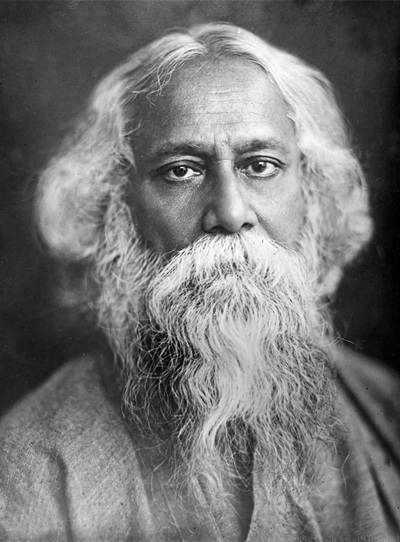The Flower School
By Rabindranath Tagore
When storm clouds rumble in the sky and June showers come down,
The moist east wind comes marching over the heath to blow its bagpipes among the bamboos.
Then crowds of flowers come out of a sudden, from nobody knows where, and dance upon the grass in wild glee.
Mother, I really think the flowers go to school underground.
They do their lessons with doors shut, and if they want to come out to play before it is time,
their master makes them stand in a corner.
When the rain comes they have their holidays.
Branches clash together in the forest, and the leaves rustle in the wild wind,
the thunder-clouds clap their giant hands and
the flower children rush out in dresses of pink and yellow and white.
Do you know, mother, their home is in the sky, where the stars are.
Haven’t you seen how eager they are to get there?
Don’t you know why they are in such a hurry?
Of course, I can guess to whom they raise their arms;
they have their mother as I have my own.
Introduction to the Poet
Rabindranath Tagore (1861-1941) was a renowned Indian poet, writer, composer, philosopher, and painter who reshaped Bengali literature and music. Born in Calcutta (now Kolkata), India, Tagore became the first non-European to win the Nobel Prize in Literature in 1913. He is fondly known as “Gurudev” and is considered the national poet of India and Bangladesh. Tagore wrote thousands of poems, stories, songs, and plays. His collection of poems “Gitanjali” (Song Offerings) brought him international fame. Tagore also founded a school called Shantiniketan (Abode of Peace), which later became a university, where he put his educational ideals into practice. His works often celebrate nature, spirituality, and the simple joys of life, expressed through imaginative and accessible language.
About the Poem
“The Flower School” is a delightful poem that showcases Rabindranath Tagore’s ability to see the world through a child’s eyes. Written as part of his famous collection for children called “The Crescent Moon,” this poem captures the innocent and imaginative way children interpret nature. Through the voice of a child speaking to their mother, Tagore creates a charming fantasy world where flowers attend underground schools, follow rules, and celebrate holidays when it rains. The poem beautifully connects human experiences with natural phenomena, suggesting that flowers, like children, have routines, discipline, play, and family connections. Through simple language and vivid imagery, Tagore reminds us of the wonder and magic that can be found in everyday observations of nature, encouraging both children and adults to maintain their sense of imagination and curiosity about the world around them.

















